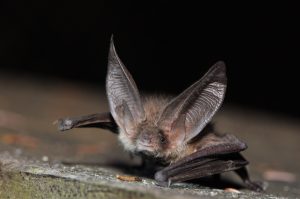| Project duration: | 2024-2027 |
|---|---|
| Project status: | Active |
| Project leader: | Ireneusz Ruczyński |
 The primary goal of the proposed project is to link the diversity and abundance of water bodies to
The primary goal of the proposed project is to link the diversity and abundance of water bodies to
the duration and intensity of emergence pulses of aquatic insects and the activity of a main group
of insectivorous ecosystem service providers – bats. More specifically, I want to test how the
abundance and diversity of water bodies stabilize insect abundance over larger spatial scales and
how this buffers potential resource bottlenecks for important agents for agricultural pest control
such as bats in farmland dominated landscape and how landscape structure modify spatial and
temporal bat activity.
Water bodies such as lakes, rivers and wetlands play a crucial role in maintaining the health and
functioning of ecosystems worldwide. In recent times, there has been a rapid decline in water
resources primarily due to the excessive exploitation of groundwater, draining of wetlands, river
regulations, and the effects of climate change. The disappearing of water bodies significantly impact
the development of insects that undergo aquatic life stages, including mayflies. This can adversely
affect the broader ecosystem dynamics that depend on these insects. Maintaining high insect
predator abundance is essential to maintain natural processes in farmland ecosystems, such as
regulating insect abundance, especially insect pests. Low predator activity may decrease ecosystem
resistance to pest outbreaks in farmland.
These effects may be mitigated by preserving or re-introducing structures such as ponds into
agricultural landscapes. The vicinity of water ponds, marshlands, and rivers, often absent in
intensively used farmland may be critical for bats that forage over farmland and help control crop
pests. The cascading effect of water deficit on the function of a population of highly mobile
insectivorous predators such as bats is poorly understood. Mass swarming of insects (insect
outbreaks) can provide crucial food for insectivorous bats. Aquatic insects may appear in high
concentrations, creating swarms which bats may detect and exploit. Waterbodies with a high
abundance of insects may allow bats to maintain active bats in farmland and help to control pests.
Unfortunately, local, short-lasting swarms are probably challenging to find. Understanding when,
where and which species of bats may use such rich food resources is crucial for understanding the
functioning bat population in an agricultural landscape and pest control possibilities.
The project will explore two levels of ecosystem functional relationships: 1) the relationship
between water body heterogeneity/diversity and the presence of insect swarming (the landscape of
pulsating insect resources), 2) the spatial and temporal relationship between insect-swarming pulses
and bat activity (the landscape of predator activity).
I hypothesize that absolute and relative insect abundance over waterbodies (measured at
different spatial scales), shapes the activity and presence of different species of bats. On average,
areas with a higher probability of insect abundance will be visited more intensively than those with
lower ones. The increase of bat activity in response to insect pulses will be mainly by the fast-flying
aerial hawking group of bats. Despite insect abundance and landscape heterogeneity, higher water
habitat connectivity should increase bat activity. I hypothesize that agricultural pests will be
frequently present in the bats’ diet. But temporal food shortages necessitate bats to depend more on
swarming insect pulses by bats to overcome energy deficits.
The project involves simultaneous monitoring of insect abundance which I will measure using a
newly developed method using cameras with flash. At the same time bat activity will be evaluated
based on echolocation calls recorded by detectors. The project will contribute novel and significant
insights into conservation biology and applied ecology.
